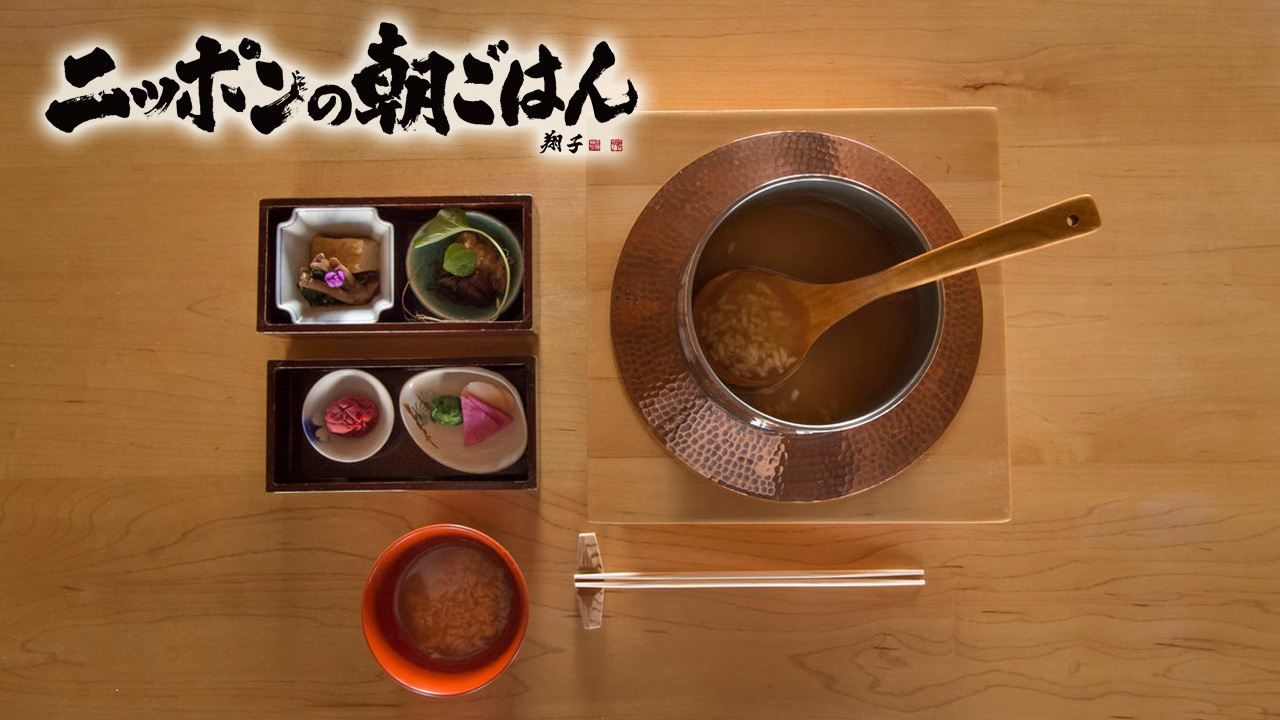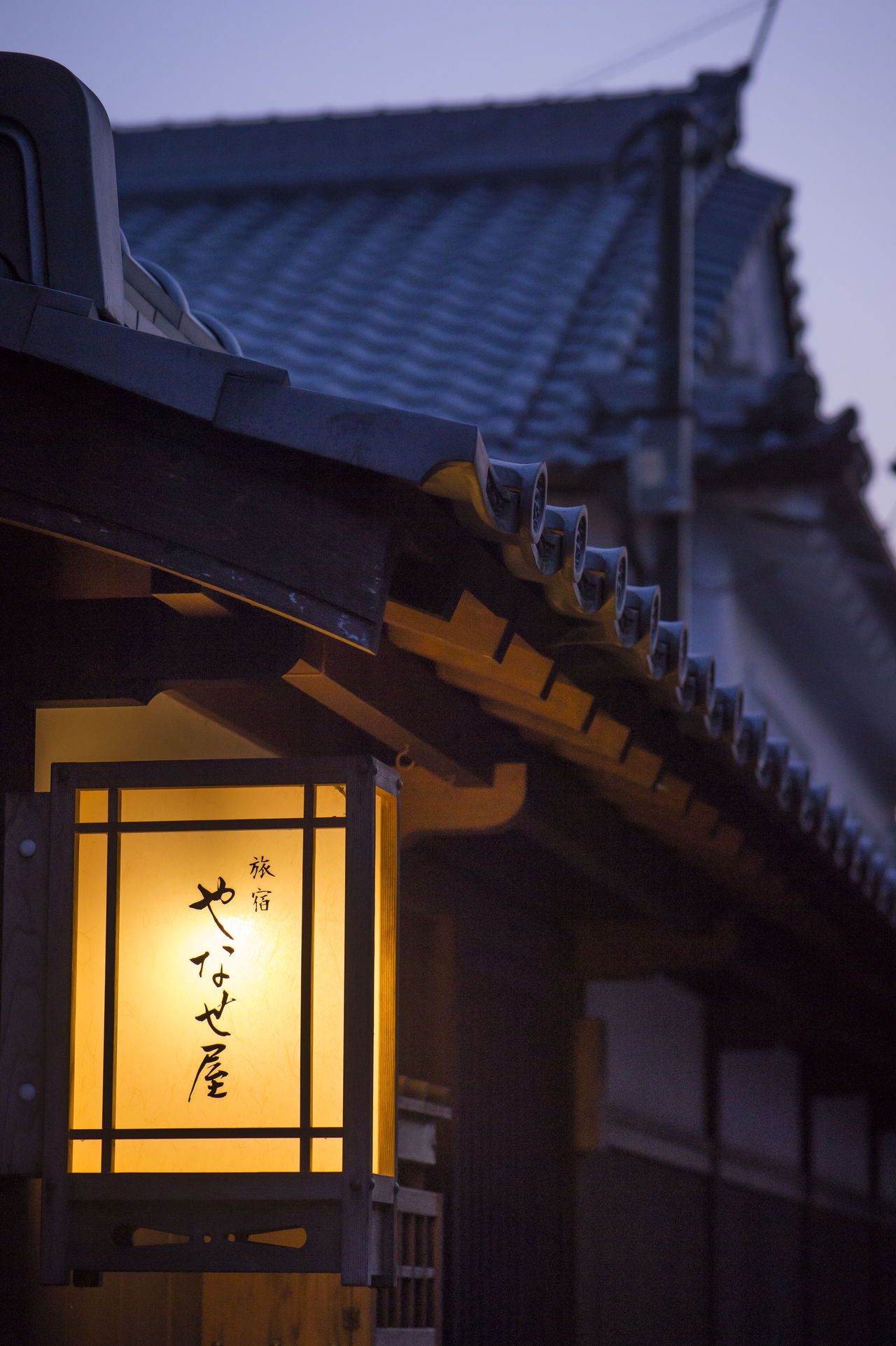
Breakfast Around Japan: A Culinary Adventure
Historic Townhouse Serves Ultimate Nara Breakfast: Yanaseya and Gojō Genbei Honor Traditional Local Culture
Guideto Japan
Food and Drink Travel Lifestyle- English
- 日本語
- 简体字
- 繁體字
- Français
- Español
- العربية
- Русский
 Menu
Menu
- Chagayu (tea gruel)
- Nishime (simmered vegetables)
- Seasonal vegetable in sesame dressing
- Deep-fried tofu
- Umeboshi (pickled plums)
- Pickles
- Kinzanji miso
Gojō in Nara Prefecture is best known for its beautifully preserved and restored historic district Gojō Shinmachi. Located near the intersection of several key transportation routes during the Edo period (1603–1868), it developed into a thriving market town and merchants’ community and prospered up until the beginning of the Shōwa era (1926–89). Shinmachi-dōri street in Gojō retains the ambience of old Japan with its traditional storefronts and machiya (townhouses), some dating back to the early seventeenth century.
Visitors to this picturesque neighborhood have the opportunity to stay at Yanaseya, a traditional machiya elegantly converted to a Japanese-style bed and breakfast—and if they do, they will have an entire building to themselves. The elegant wooden main building, with its second-floor view of the Yoshino River, and the heavy plaster-walled storehouse in back are roughly a century old, dating from the Taishō era (1912–26). In Japan, which has preserved so little domestic architecture from the prewar era, it is revealing to hear locals refer to the property as “one of the newer buildings.”
 The picturesque Gojō Shinmachi district at dusk.
The picturesque Gojō Shinmachi district at dusk.
 A wooden lantern lights the way to Yanaseya.
A wooden lantern lights the way to Yanaseya.
 Yanaseya offers detached machiya (townhouse) accommodations. The main building and storehouse, pictured here, are both about a century old.
Yanaseya offers detached machiya (townhouse) accommodations. The main building and storehouse, pictured here, are both about a century old.
 Breakfast is served in the living-dining-room area on the second floor of the main building.
Breakfast is served in the living-dining-room area on the second floor of the main building.
 The refurbished interior preserves traditional Japanese touches.
The refurbished interior preserves traditional Japanese touches.
Breakfast at this unique lodging is provided courtesy of Gojō Genbei, the Japanese restaurant across the street. Chef Nakatani Akihito personally prepares a morning meal brimming with local character: Nara chagayu (rice gruel cooked in tea) accompanied by an enticing array of side dishes and condiments, tastefully presented in an elegant two-tiered lacquer bentō box.
“The farming culture of the mountainous Nara region is the bedrock on which the merchants’ community grew up,” explains Nakatani. “According to local lore, the farmers used to cook chagayu in the morning and eat it for breakfast, then pack it up and eat it again in the fields for lunch, and then eat it on top of white rice for dinner. That was how they filled their stomachs. At a time when rice was scarce, cooking it into gruel was the best way to stretch it.”
Rice gruel supports hard labor. It goes down quickly and provides energy and a feeling of satiety. The pickles and miso that traditionally accompany the gruel supply sodium, a crucial nutrient for people working up a sweat in the fields. Our ancestors were remarkably resourceful when it came to cooking up wholesome meals from the resources at their disposal.
But there was more to life than gruel. On special occasions, like festivals or local sumō exhibitions, villagers and townspeople alike would pack lunch boxes full of festive dishes to take with them as they headed out to enjoy a day of fellowship and entertainment. Nakatani honors that tradition with the individual lacquer bentō boxes he delivers along with the morning’s chagayu. Remove the glossy lid and you are greeted by an appetizing array of dishes and condiments lovingly prepared from choice local ingredients. Outwardly simple to the point of austerity, breakfast at Yanaseya reveals its richness and subtlety as it unfolds—Nara taste at its best.
Our breakfast at Yanaseya consisted of the following:
Chagayu (tea gruel)
Traditional Gojō chagayu is made with bancha [made from mature leaves and stems], which was, long the only tea available to this area’s inhabitants. Chef Nakatani cooks up a fresh batch each morning, making the most of bancha’s rustic nutty aroma.
Simmered awabitake mushrooms
Winter spinach with sesame dressing
Parboiled Brussels sprouts
This deceptively simple dish is carefully conceived and prepared to bring out the full flavor and aroma of the chagayu.
Deep-fried tofu (atsuage)
The atsuage is made fresh by a tofu shop in the Gojō Shinmachi district. Gojō preserves many components of the sophisticated food culture that has developed in this region over the centuries, including traditional soy sauce and sake breweries.
Pickles
Purple daikon radish, sweet-and-sour ginger, takana (pickled mustard leaves), and three-year-old narazuke
The Gojō area has a number of farms specializing in unusual and heirloom vegetables, and Gojō Genpei partners with them to procure fresh local produce for processing and pickling. The restaurant’s narazuke, representing the region’s best-known pickle, is cured in sake lees for three full years.
Umeboshi
The rustic yet mild-tasting pickled plums are supplied by a community women’s co-op that specializes in pickling local produce.
Kinzanji miso
Another product of the women’s co-op is Kinzanji miso, a traditional condiment made from fermented barley, rice, and soybeans. The co-op’s pickles and condiments are also sold at markets operated by the local Japan Agriculture cooperative.
 An exquisite still-life of a Japanese breakfast: chopsticks, lacquer bowl, and lacquer bentō box adorned with a sprig of camellia.
An exquisite still-life of a Japanese breakfast: chopsticks, lacquer bowl, and lacquer bentō box adorned with a sprig of camellia.
 Each morsel in the bentō box is designed to bring out the full flavor and aroma of chagayu, the star of the show.
Each morsel in the bentō box is designed to bring out the full flavor and aroma of chagayu, the star of the show.
 The two-tiered box contains a total of 10 different accompaniments.
The two-tiered box contains a total of 10 different accompaniments.
Yanaseya
Address: 2-7-3 Honchō, Gojō, 637-0041, Nara Prefecture
Phone: +81-(0)747-25-5800
Website (in Japanese and Korean): http://yanaseya.info/
Reservations by phone only.
Gojō Genbei
Address: 2-5-17 Honchō, Gojō, 637-0041, Nara Prefecture
Phone: +81-(0)747-23-5566
Website (in Japanese and Korean): http://genbei.info/english/
(Originally written in Japanese. Photos by Kusumoto Ryō. Series title written by Kanazawa Shōko.)
Related Tags
Nara tourism food Washoku cuisine Breakfast Around Japan: A Culinary Adventure
